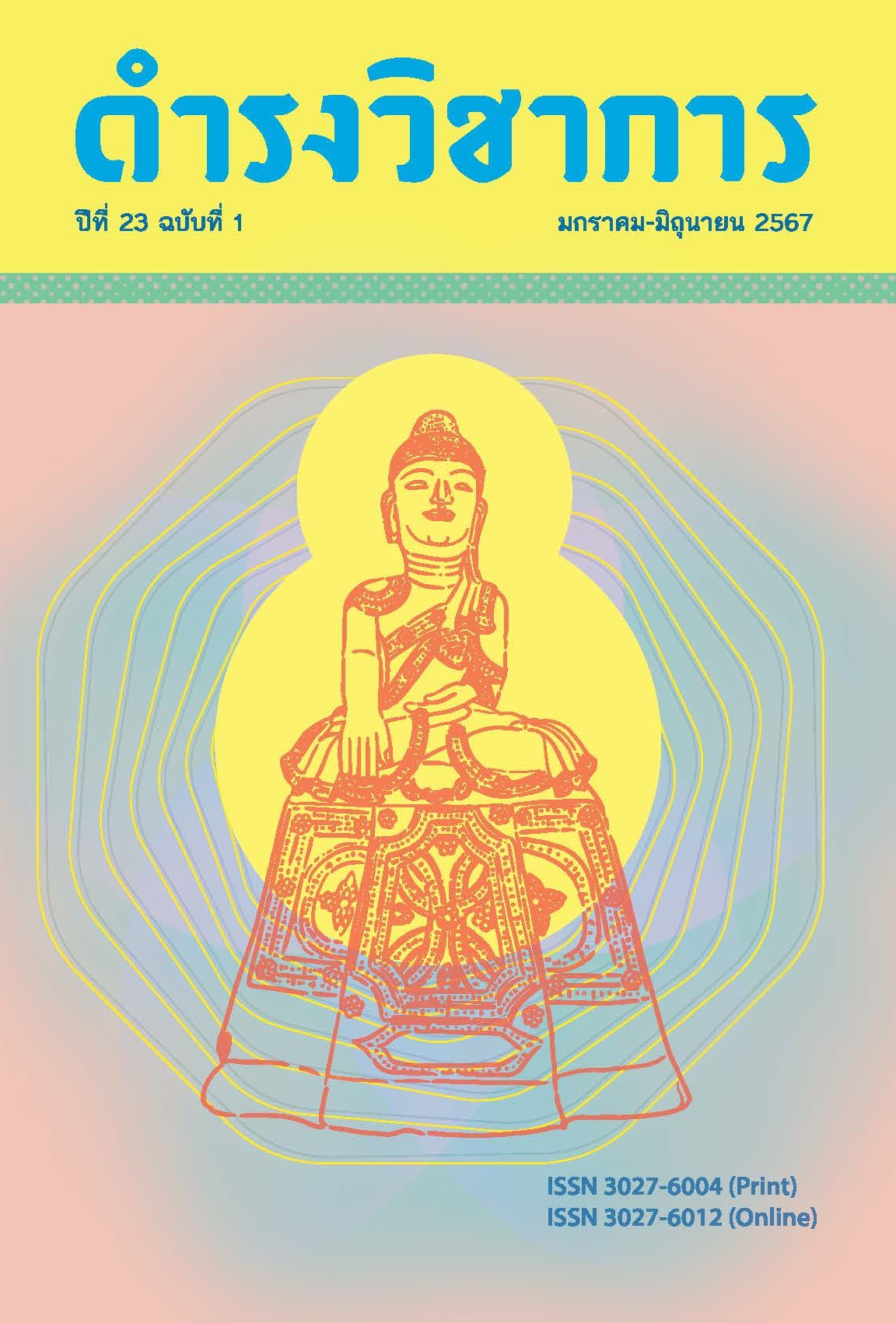Kāmadeva in “Padyacūḍāmaṇi of Buddhaghoṣācārya” A Medieval Buddhist Literature on Buddha’s Life
Keywords:
Padyacūḍāmaṇi, Buddhaghoṣācārya, Kāmadeva, MāraAbstract
This article aims to present Kāmadeva in two prominent roles; that is, as the god of love, and as Māra who tries to drive the Bodhisattva away from his seat under the Bodhi tree, as depicted in “Padyacūḍāmaṇi of Buddhaghoṣācārya”, a Sanskrit Buddhist text on the life of the Buddha like Buddhacarita, Mahāvastu and Lalitavistara. The story is set in the intermediate epoch (avidūrenidāna) and begins with a group of devas ascending to the Tusita heaven to invite the Bodhisattva to be born in the human world. It ends when he is enlightened as a Buddha. Even in this text, some parts of Buddha’s life are missing, but the chapter on the temptations of Buddhisattva by Māra is still the crux of the story. From the study, it was found that Buddhaghoṣācārya, the author, tilizes Kāmadeva, a Hindu mythological deity, to play both explicit and implicit roles throughout the story, by taking two different roles; that is, as the god of love and Māra. This indeed has never appeared in any other Buddhist literature pertaining to the life of Buddha.
References
ภาษาไทย
ธนิต อยู่โพธิ์, 2513. มาร. ธนบุรี: โรงพิมพ์อักษรเพชรเกษม.
พระพรหมคุณาภรณ์ (ป.อ. ปยุตฺโต), 2548. พจนานุกรมพุทธศาสน์ ฉบับประมวลธรรม. กรุงเทพฯ: บริษัท เอส. อาร์. พริ้นติ้ง แมส โปรดักส์ จำกัด.
_________, 2551. พจนานุกรมพุทธศาสน์ ฉบับประมวลศัพท์. กรุงเทพฯ: โรงพิมพ์มหาจุฬาลงกรณราชวิทยาลัย.
พระมหาพรภวิทย์ อุปชัย, 2564. “การศึกษาวิเคราะห์วรรณคดีเรื่องกุมารสัมภวะของกาลิทาส.” วิทยานิพนธ์ปริญญามหาบัณฑิต สาขาวิชาสันสกฤตศึกษา ภาควิชาภาษาตะวันออก บัณฑิตวิทยาลัย มหาวิทยาลัยศิลปากร
ราชบัณฑิตยสถาน, 2556. พจนานุกรม ฉบับราชบัณฑิตยสถาน พ.ศ. 2554: เฉลิมพระเกียรติพระบาทสมเด็จพระเจ้าอยู่หัว. กรุงเทพฯ: ราชบัณฑิตยสถาน.
วรลักษณ์ พับบรรจง, 2534. ฤตุสังหาร. พิมพ์ครั้งที่ 2. กรุงเทพฯ: มหาวิทยาลัยศรีนครินทรวิโรฒ.
สำเนียง เลื่อมใส, 2557. มหาวัสตุอวทาน เล่ม 2. กรุงเทพฯ: นิติธรรมการพิมพ์.
_________, 2564. พุทธจริต มหากาพย์มหาศาสดาโลก. กรุงเทพฯ: นิติธรรมการพิมพ์.
ภาษาอังกฤษ
Acharya M. Ranga, & Sastri S. Kuppuswami (eds.), 1921. Padyacūḍāmaṇi of Buddhaghoṣācārya. Madras: The Superintendent, Government Press.
Dayal Har, 1975. The Bodhisattva doctrine in Buddhist Sanskrit literature. Delhi: Motilal
Banarsidass.
Monier-Williams M., 1899. Monier-Williams Sanskrit-English dictionary. Oxford: The Clarendon Press.
Warder A.K., 1988. Indian Kāvya literature, Volume 5: The bold style (Śaktibhadra to Dhanapāla). Delhi: Motilal Banarsidass.
Wilkins W.J., 1900. Hindu mythology, Vedic and Puranic. Calcutta: Thacker, Spink & Co; London: W. Thacker & Co.
ข้อมูลอิเล็กทรอนิกส์
มหามกุฏราชวิทยาลัย. พระไตรปิฎกและอรรถกถาแปลชุด 91 เล่ม ฉบับมหามกุฏราชวิทยาลัย. ค้นเมื่อ 3 ตุลาคม 2565, จาก https://archive.org/details/pali-cannon-tripitaka-maha-makut-edition-91-volumes-pdf-pothiyarn
Downloads
Published
Issue
Section
License
Copyright (c) 2024 Damrong Journal of The Faculty of Archaeology Silpakorn University

This work is licensed under a Creative Commons Attribution-NonCommercial-NoDerivatives 4.0 International License.
บทความนี้เป็นผลงานของข้าพเจ้าแต่เพียงผู้เดียว และ/หรือเป็นผลงานของข้าพเจ้าและผู้ร่วมงาน ตามชื่อที่ระบุในบทความจริง และเป็นผลงานที่มิได้ถูกนำเสนอหรือตีพิมพ์ที่ใดมาก่อน


